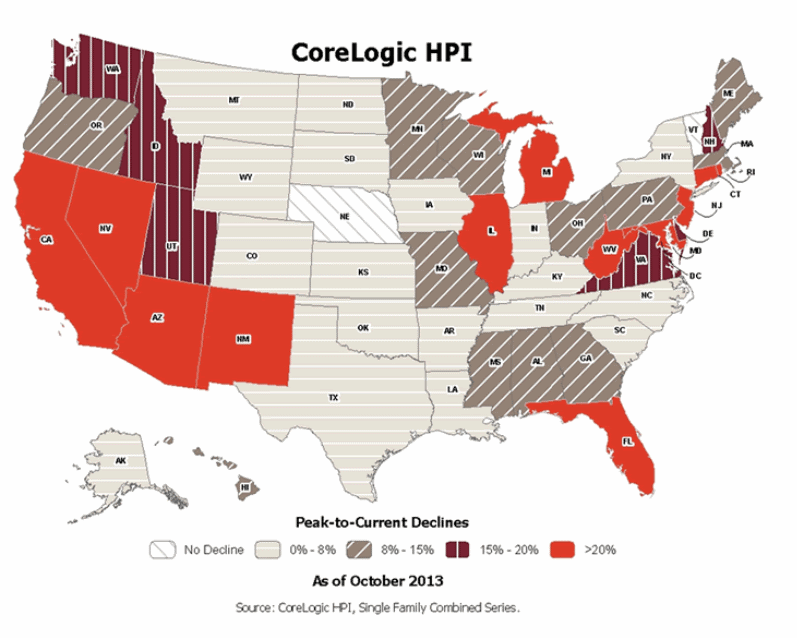CoreLogic said today that month-over-month increases in home prices slowed to fractional numbers in October even as year-over-year increases continued for the 20th consecutive month. The company's Home Price Index (HPI) which includes both equity and distressed sales was up 0.2 percent from September to October and was 12.5 percent higher than one year earlier.
Increases in the HPI peaked in April when prices rose 2.68 percent on a month-over-month basis. The increases have slowed every month since. The increase from July to August was 0.67 percent and from August to September 0.5 percent.
CoreLogic's HPI which excludes distressed sales increased by 0.4 percent in October and by 11.0 percent compared to October 2012. Distressed sales include short sales and sales of lender-owned (REO) property
Nine states had annual price increases (including distressed sales) that exceeded the national HPI. Nevada continued to lead with the largest increase at 25.9 percent followed by California (22.4 percent,) Georgia (14.2 percent,) Michigan (14.1 percent,) and Arizona (14.0 percent.) New Mexico was the only state where this HPI depreciated from one year ago, declining by a half percent.

The HPI excluding distressed sales increased across all states with eleven having increases above the national average. Nevada and California were also number one and two on this scale with increases of 22.5 percent and 18.5 percent respectively. Utah's HPI increased by 13.3 percent, Florida's by 13 percent, and New York by 12.4 percent.
The HPI including distressed transactions is now 17.3 percent below the peak reached in April 2006, and the HPI excluding distressed sales is 13.1 percent lower. The five states which are still posting the largest declines from their respective peaks are, in declining order, Nevada, Florida, Arizona, Rhode Island, and West Virginia. The changes range from -40.7 percent to -28 percent
Ninety-six of the top 100 Core Based Statistical Areas (CBSAs) measured by population showed year-over-year increases in October 2013. Five CBSAs exceeded the national average increase; Riverside-San Bernardino-Ontario (+24.1 percent), Los Angeles (22.1 percent), Atlanta (16.4 percent), Phoenix (15.9 percent), and Chicago (12.3 percent).
Prices are expected to remain essentially unchanged in November according to CoreLogic's Pending HPI. The index, based on Multiple Listing Service Data, indicates that prices including distressed sales will remain at October levels while the November index is expected to show double digit growth, 12.2 percent, year-over year. When distressed sales are excluded the November HPI will increase 0.4 percent from October and 11.3 percent compared to October 2012.
"In October, the year-over-year appreciation rate remained strong, but the month-over-month appreciation rate was barely positive, indicating that house price appreciation has slowed as expected for the winter," said Dr. Mark Fleming, chief economist for CoreLogic. "Based on our pending HPI, the monthly growth rate is expected to moderate even further in November and December. The slowdown in price appreciation is positive for the housing market as almost half the states are now within 10 percent of their respective historical price peaks."
"In terms of home price appreciation, the housing market appears to be catching its breath as we head into the final months of 2013," said Anand Nallathambi, president and CEO of CoreLogic. "The deceleration in month-on-month trends was anticipated as strong gains in home prices over the spring and summer slow in line with normal seasonal patterns and the impact of higher mortgage interest rates."







